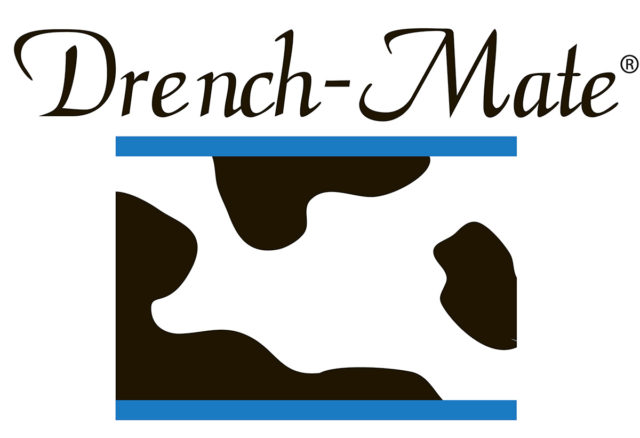Editor’s note: Dr. Jane Caldwell wrote this article in response to California dairy farmer Stephen Weststeyn’s producer blog, “Expanding the conversation about the health benefits of milk” that ran in our March 12 issue. Humans have teamed up with many organisms, both large and small, for mutually beneficial reasons. We have domesticated dogs and cats as protectors and pets, while they rely on us to feed and house them.
We have modified certain grass species through centuries of selective breeding and produced corn and other grains. We grow and maintain microorganisms such as yeasts, which help us produce bread or to ferment grapes and grains for wine and beer.
We now recognize that milk-fermenters, such as lactic acid bacteria, have evolved side-by-side with humans for the benefit of both life forms. Today, no one disputes that fermented milk products such as yogurt, kefir and sour milks promote gut and even good general health in humans.
But it took us to the end of the 20th century to understand the biochemical how and whys; the mechanisms behind these positive effects. Scientists in both academic and industrial labs have isolated and characterized milk biopeptides, small molecules that produce desirable physiologic responses when consumed.
From these and other data, a new discipline in food science research has emerged called functional foods or nutraceuticals.
Researchers had discovered that certain bacteria, Lactobacillus helveticus, Bacillus licheniformis and others can cut, or hydrolyze, milk proteins. This hydrolysis is crucial because when the proteins are their full length, they are inactive. When probiotic bacteria ferment milk, its proteins are cut into small groupings of amino acids, the building blocks of proteins.
Some are very small; only two amino acids in length. These small molecules are called biopeptides, functional foods or nutraceuticals because their actions are not nutritional or structural. They act more like hormones, messengers or enactors, altering some important bodily functions in the host. Let’s examine a few of the specifics.
One major beneficial action of these small molecules is stress reduction. Some biopeptides are opioid-like compounds which relieve or take the edge off pain. They belong to a class of peptides called endorphins. Sports medicine doctors tell us that endorphins are the “feel-good” hormones that are released when we exercise, giving us the “runner’s high” during a long jog.
Other biopeptides reduce stress by lowering blood pressure through dilation or relaxation of blood vessels. In fact, commercial milk fermentation products have been patented in the U.S., Finland and Japan, targeting moderate- to high-blood pressure patients. In clinical studies in Finland, researchers found that consuming sour milk fermented with Lactobacillus helveticus (a beneficial lactic acid bacterium used in Swiss cheese production) lowered blood pressure in patients.
The advantages of using natural products such as fermentates over medications are obvious; they are cheaper than prescription drugs, can be purchased over-the-counter and are less likely to have adverse side effects.
However, although biopeptide-containing drinks are very popular in Japan, they have never really caught on in the U.S. Unfortunately, our so-called “energy” drinks are, in reality, large shots of caffeine. Perhaps as the Boomers and Millennials continue to age and grow savvier, we may shift to healthier and gentler drinks containing fermented milk biopeptides.
Some milk biopeptides contribute to improved binding and absorption of minerals, especially calcium needed for bone, teeth and a myriad of chemical reactions in the body. They also have antioxidant activities (think, fewer wrinkles!), function to stimulate the host immune system, inhibit cancer cell growth in the gut and have antimicrobial properties.
Scientists hypothesize that biopeptides create holes in the cell walls of pathogens. Although bacteria are microscopic, they are highly pressurized, similar in pressure to an SUV tire. Therefore, holes in their outer membranes can cause rapid cell death.
Also, some of the very small biopeptides can enter the bacteria by diffusion and interfere with the bacterial DNA and disrupt cell functions. Elimination of gut pathogens can reduce the incidence of diarrhea and minimize the occurrence of infection in both healthy and at-risk individuals.
Bioactive peptides can be created by the actions of digestive enzymes such as trypsin and peptidase on milk in the host’s gut. However, larger more concentrated quantities of biopeptides can be produced by fermentation processes using beneficial bacteria and their enzymes.
Therefore, milk fermentates such as yogurt, kefir and sour milks contain more concentrated forms of biopeptides than milk itself. At-risk groups such as the young, the old, pregnant and immune-suppressed (termed YOPI), have underdeveloped or overworked gastrointestinal tracts and reduced immunity.
Since they are not able to make sufficient biopeptides, they benefit the most from fermented milk products and the activities of these small peptides. However, healthy individuals can also reap the benefits of biopeptides.
Because we now understand the importance of the foods we eat in health and aging, nutraceutical or functional foods will continue to be an expanding market as our population ages and as the educated Millennial generation feeds its children. With more than 20 years of confirmed data as nutraceuticals, biopeptides from fermented milk are well-positioned for these functional food markets. PD
References omitted but are available upon request. Click here to email an editor.

-
Jane M. Caldwell
- Director of Research and Development
- TransAgra International
- Email Jane M. Caldwell





